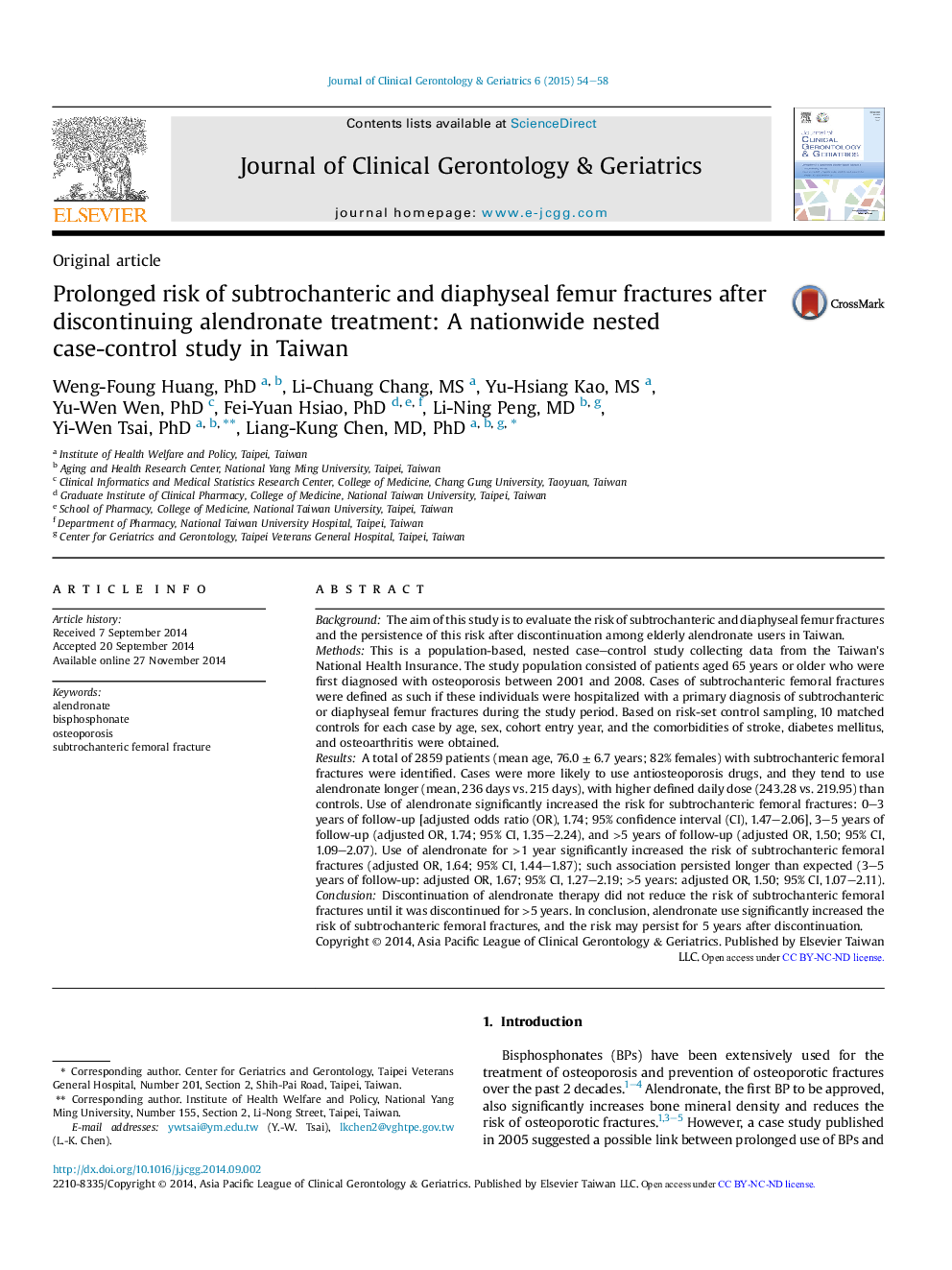| کد مقاله | کد نشریه | سال انتشار | مقاله انگلیسی | نسخه تمام متن |
|---|---|---|---|---|
| 3325751 | 1212035 | 2015 | 5 صفحه PDF | دانلود رایگان |
BackgroundThe aim of this study is to evaluate the risk of subtrochanteric and diaphyseal femur fractures and the persistence of this risk after discontinuation among elderly alendronate users in Taiwan.MethodsThis is a population-based, nested case–control study collecting data from the Taiwan's National Health Insurance. The study population consisted of patients aged 65 years or older who were first diagnosed with osteoporosis between 2001 and 2008. Cases of subtrochanteric femoral fractures were defined as such if these individuals were hospitalized with a primary diagnosis of subtrochanteric or diaphyseal femur fractures during the study period. Based on risk-set control sampling, 10 matched controls for each case by age, sex, cohort entry year, and the comorbidities of stroke, diabetes mellitus, and osteoarthritis were obtained.ResultsA total of 2859 patients (mean age, 76.0 ± 6.7 years; 82% females) with subtrochanteric femoral fractures were identified. Cases were more likely to use antiosteoporosis drugs, and they tend to use alendronate longer (mean, 236 days vs. 215 days), with higher defined daily dose (243.28 vs. 219.95) than controls. Use of alendronate significantly increased the risk for subtrochanteric femoral fractures: 0–3 years of follow-up [adjusted odds ratio (OR), 1.74; 95% confidence interval (CI), 1.47–2.06], 3–5 years of follow-up (adjusted OR, 1.74; 95% CI, 1.35–2.24), and >5 years of follow-up (adjusted OR, 1.50; 95% CI, 1.09–2.07). Use of alendronate for >1 year significantly increased the risk of subtrochanteric femoral fractures (adjusted OR, 1.64; 95% CI, 1.44–1.87); such association persisted longer than expected (3–5 years of follow-up: adjusted OR, 1.67; 95% CI, 1.27–2.19; >5 years: adjusted OR, 1.50; 95% CI, 1.07–2.11).ConclusionDiscontinuation of alendronate therapy did not reduce the risk of subtrochanteric femoral fractures until it was discontinued for >5 years. In conclusion, alendronate use significantly increased the risk of subtrochanteric femoral fractures, and the risk may persist for 5 years after discontinuation.
Journal: Journal of Clinical Gerontology and Geriatrics - Volume 6, Issue 2, June 2015, Pages 54–58
